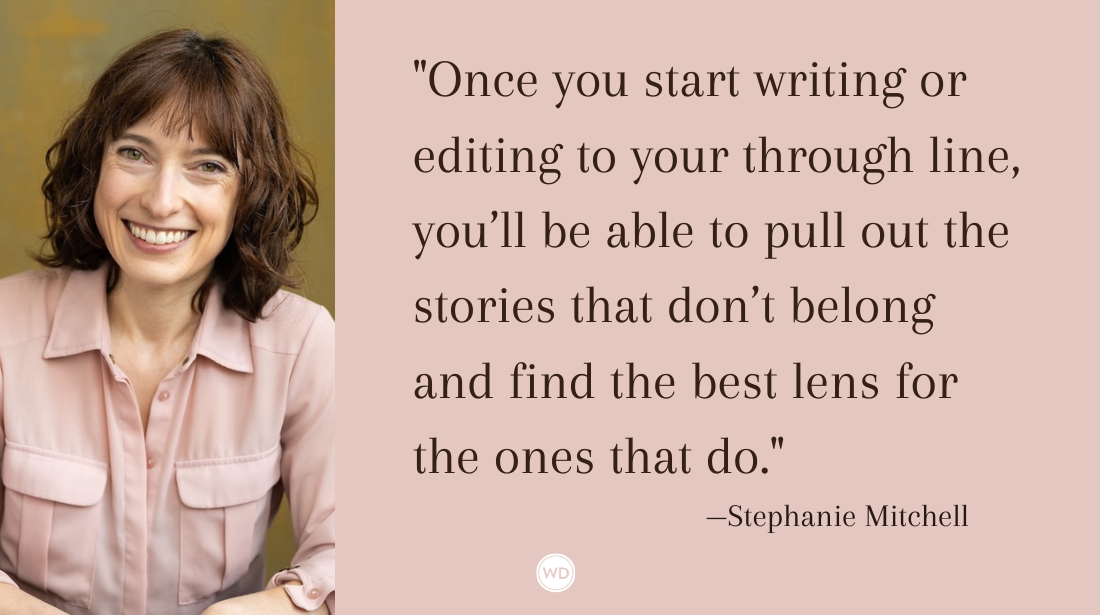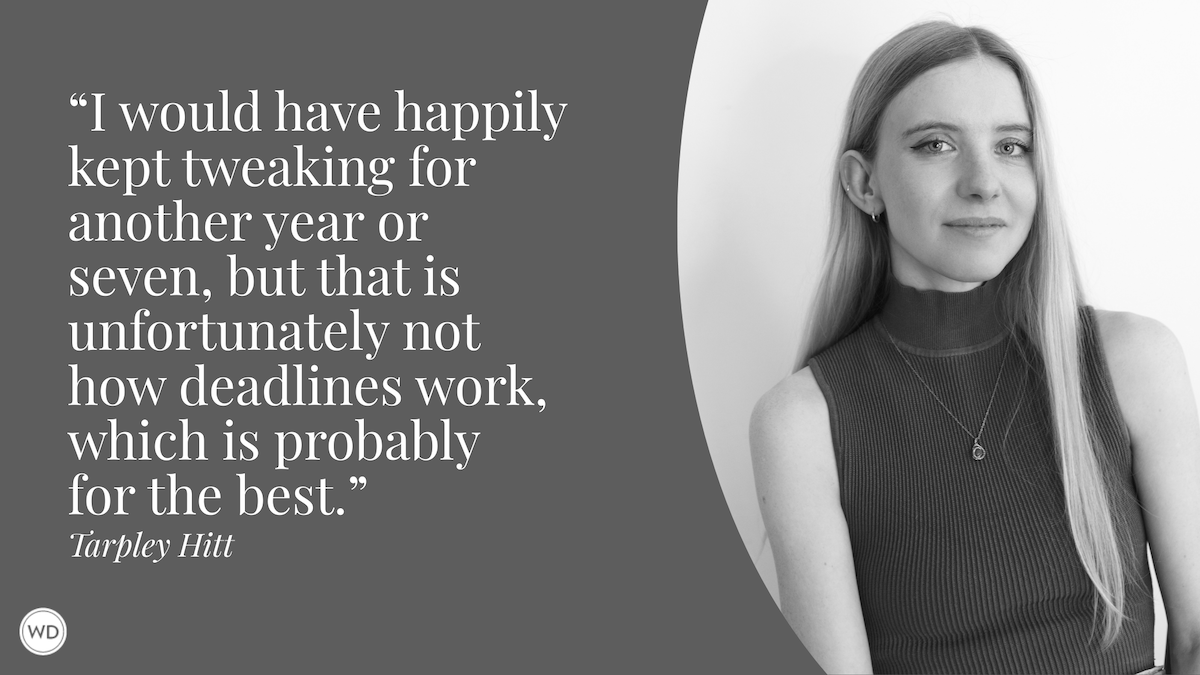The 3 Basic Building Blocks of Writing a Memoir
Some people know exactly what they want to write about when they start their memoir. Others come to the computer expecting to purge their life onto the virtual page. If that’s you, take it from me, it won’t work—at least not for a book project. By focusing on the three foundational legs of memoir — Core Threads, Clarity, and Collective—you will create a book that is clear, relatable, and universal.
Some people know exactly what they want to write about when they start their memoir. Others come to the computer expecting to purge their life onto the virtual page. If that’s you, take it from me, it won’t work—at least not for a book project. By focusing on the three foundational legs of memoir — Core Threads, Clarity, and Collective—you will create a book that is clear, relatable, and universal.
This guest post is by Colleen Haggerty, author of a memoir and personal essays. She has contributed to four anthologies: The Spirit of a Woman, He Said What? (penned as Colleen Robinson), Dancing at the Shame Prom, and Beyond Belief. After Colleen lost her leg at seventeen years old she found feeling marginalized. She developed a deep empathy for and desire to help others living on the fringe of society which led to her twenty year career in non-profit management and her latest book A Leg to Stand On. She is an inspiring public speaker and was a speaker at the 2013 Bellingham TEDx event where she talked about the power of forgiveness. Colleen writes about walking through life as an amputee at colleenhaggerty.com. She makes her home in Bellingham, WA with her husband and two teenagers.
1. Core Threads
Finding the core themes of your story by outlining your book is much like laying the warp in a weaving project. The warp are the stable, fixed threads that support the weft, the cross threads that are woven through them. The weft threads are akin to the individual stories that support each of the warp threads of your book.
The core themes inform what parts of our story to tell. For instance, when I wrote about a court trial in my book, my emphasis was about my relationship with my perpetrator (which set the tone for the Forgiveness thread) and my need to be stoic (which addressed the Resilience thread). I could have written about my relationship with my lawyer or the stress I felt when I missed college classes to attend the trial. But those weren’t relevant to my threads and would have distracted my reader.
Outlining your book will inform everything you do. Unlike fiction where the plot can take sudden twists and turns, you are writing about what actually happened. You can’t implant a new plot line when it didn’t really happen. So, given what has happened in your life, what core threads comprise your foundation?
2. Clarity
In any kind of writing, clarity is King. In memoir, there are two key places where the author needs to have clarity. First, as memoirists, we run the risk of over-sharing. A memoir is not the place to tell every story you remember from your past. If the story sheds light on the themes you’ve laid out, use it; if the story doesn’t highlight your theme, toss it.
Second, some of your stories will butt up against your themes, but are too private to share. Be crystal clear about what you are willing to share and what topics or stories are taboo.
Learn better by seeing examples? Check out Writer's Digest Tutorials,
helpful videos designed to help you reach your writing goals.
Enjoy this FREE preview and visit Writer's Digest Tutorials to learn more.
After I wrote the first few chapters of my book, I came face-to-face with parts of my life that are private, that I didn’t want to share with the world, and my writing stalled. To overcome my writer’s block, I decided to let those secret experiences see the light of day and write about them—not for publication, only to purge.
I went to a friend’s cabin for two days and wrote non-stop about an experience I had ten years prior. I emotionally threw up onto the page. Because that experience was so big and life-altering, I had been expending a lot of energy remembering every detail, reliving the experience so it wouldn’t be forgotten. Writing down all those details actually freed my brain and made room for me to focus on what I did want to write about.
The second time I went away to purge-write, I spent two days writing about two stories on the taboo list, the two abortions I had when I was in my twenties. After that weekend, I discovered that I had just written two chapters of my book. I didn’t intend to include my abortion stories until I realized how integral those experiences were to the threads in my book. Leaving them out would have left the narrative flat, uninteresting, and lacking tension.
I suggest writing a list of all the taboo subjects you are unwilling to share. If and when you come up against those topics, try writing about them. These are the elephants in the living room of your brain. Once you write about them—for your eyes only—your brain will be free to write about what you want or you may discover, as I did, that you are actually willing to share the story.
If you're looking to master everything from dialogue to different
styles of grammar, you'll get the best tools available for writing
fiction in this Write Great Fiction Collection of 12 great writing resources.
Click here to buy it now.
3. Collective
It’s important that our story is relatable. When I decided to publish my memoir, I solicited endorsers. After receiving out my manuscript, I received an email from someone who said she couldn’t endorse my book, stating that she couldn’t finish my book because it was one big whine-fest. I was devastated. Heartbroken. This remark spoke to my biggest fear: being a whiner. I had, in fact, spent my whole life being stoic, so to hear that I had purged thirty-five years of pent-up non-whining into my book was a disappointment and an embarrassment. My book had recently been edited, so I asked the copy editor for her opinion. In her sensitive way, she confirmed what the uncaring non-endorser said.
I decided to hire a developmental editor to help me tighten the threads and highlight the universality of the book. We made the book less about me, me, me and made it more about me, you, us. They say “show, don’t tell,” but I discovered that, for the memoirist, the narrator has to occasionally tell the reader her revelations so the reader has something concrete to hold onto.
Your memoir needs to give the reader something to walk away with besides a great story. By identifying and staying true to your themes, you can weave a story that is so tight and textured that it envelopes the reader with a renewed sense of self and a feeling of belonging to the collective whole of humanity.
Thanks for visiting The Writer's Dig blog. For more great writing advice, click here.
Brian A. Klems is the editor of this blog, online editor of Writer's Digest and author of the popular gift bookOh Boy, You're Having a Girl: A Dad's Survival Guide to Raising Daughters.
Follow Brian on Twitter: @BrianKlems
Sign up for Brian's free Writer's Digest eNewsletter: WD Newsletter









